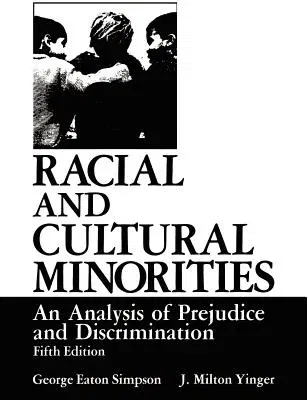George Eaton Simpson
(Author)Racial and Cultural Minorities: An Analysis of Prejudice and Discrimination (1985. Softcover Reprint of the Original 5th 1985)Paperback - 1985. Softcover Reprint of the Original 5th 1985, 30 June 1985

Qty
1
Turbo
Ships in 2 - 3 days
In Stock
Free Delivery
Cash on Delivery
15 Days
Free Returns
Secure Checkout
Part of Series
Environment, Development and Public Policy: Public Policy an
Part of Series
Topics in Contemporary Semiotics
Print Length
491 pages
Language
English
Publisher
Springer
Date Published
30 Jun 1985
ISBN-10
0306417774
ISBN-13
9780306417771
Description
Product Details
Book Edition:
1985. Softcover Reprint of the Original 5th 1985
Book Format:
Paperback
Country of Origin:
US
Date Published:
30 June 1985
Dimensions:
24.61 x
18.9 x
2.62 cm
ISBN-10:
0306417774
ISBN-13:
9780306417771
Language:
English
Location:
New York, NY
Pages:
491
Publisher:
Weight:
902.65 gm

